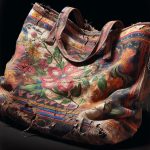Imagine the satisfying texture of a perfectly printed fabric, unique to your own design. If you're considering making custom fabric prints at home, you'll first want to select high-quality fabric, like absorbent cotton or durable synthetics. Proper preparation is vital, so wash and iron your fabric before you start. The next steps involve brainstorming and digitizing your patterns, and choosing the right materials like fabric paint or dye. Different printing techniques, such as block printing, can give varied results. Curious about ensuring vibrant and long-lasting prints? Let's explore the essential methods and tips to master this craft.
Table of Contents
Key Takeaways
- Choose High-Quality Fabric: Select a suitable fabric, like cotton or linen, and prepare it by washing, ironing, and pre-treating.
- Design and Digitize: Create and digitize your pattern, ensuring color coordination and testing with mock-ups for accuracy.
- Select Appropriate Materials: Use fabric-specific inks or dyes and tools like brushes, sponges, or stamps for application.
- Practice Printing Techniques: Experiment with block printing and use a brayer for even ink application; practice on scrap fabric first.
- Ensure Print Quality: Heat set your prints properly and troubleshoot common issues like ink bleeding or misalignment.
Selecting Your Fabric
Choosing the right fabric is essential to guaranteeing your custom prints turn out beautifully. You need to contemplate the fabric types available, as each one interacts differently with printing tools.
Cotton is a popular choice due to its absorbency and smooth surface, making it ideal for intricate designs. Linen, while more textured, offers a rustic charm that's perfect for earthy patterns. Synthetics like polyester can hold vibrant colors well, but they might require specialized inks or treatments.
When selecting your fabric, ponder how it will complement your color choices. A white or light-colored fabric will make your colors pop, while darker fabrics might require opaque or metallic inks to stand out. Be mindful of how the fabric's base color might alter your design's final appearance.
Pattern placement is another critical consideration. The fabric's weave and stretch can affect how your pattern aligns and appears. For instance, knits stretch and can distort patterns, so they require careful handling.
Plan your design layout meticulously to guarantee that the pattern placement remains consistent across the fabric, enhancing the overall visual impact of your custom print.
Designing Your Pattern
Crafting your pattern is an exciting step that transforms your creative vision into a tangible design. Start by brainstorming ideas and sketching out rough drafts. Think about the theme you want to convey and the elements that will make your pattern stand out. Creating unique designs requires attention to detail, so consider how shapes, lines, and motifs will interact across the fabric.
Next, focus on color coordination. Choose a color palette that not only complements your design but also fits the intended use of the fabric. Use color theory principles to create harmony or contrast, depending on the effect you're aiming for. Experiment with different shades and combinations to see what best enhances your pattern.
Once you have a solid concept, transfer it to a digital format. Software like Adobe Illustrator or Photoshop allows you to refine your design with precision. Utilize layers and grids to guarantee consistency and alignment.
Don't forget to test your pattern with mock-ups to see how it repeats and scales.
Gathering Materials
To start your custom fabric prints project, you'll need to gather a few essential materials. Begin by sourcing supplies that fit your specific design needs. High-quality fabric is vital; cotton and linen are excellent choices for beginners due to their easy handling and dye absorption. Make sure the fabric is pre-washed to remove any sizing or chemicals that could interfere with your print.
Next, you'll need fabric paint or dye. Fabric paint offers vibrant colors and is user-friendly for DIY projects. If you prefer a more professional finish, fabric dyes provide deeper penetration and longer-lasting results.
Don't forget brushes, sponges, or stamps for applying your design. These tools will help you transfer your pattern accurately and efficiently.
You'll also need a sturdy, flat workspace covered with a protective layer to prevent any mess. A piece of cardboard or a cutting mat works well. Additionally, gather some painter's tape to secure your fabric in place, ensuring stability while you work.
Lastly, have an ironing board and iron handy; heat-setting your design will enhance its durability.
With these materials ready, you'll be well-prepared to start on your custom fabric printing journey.
Preparing the Fabric
Now that you've gathered all your materials, it's time to properly prepare the fabric for printing. A successful print starts with meticulous fabric prepping. Begin by selecting the right type of fabric based on your dyeing techniques and color theory. Natural fabrics like cotton, linen, and silk absorb dyes better and provide a vibrant outcome.
Before you start, wash and dry the fabric to remove any sizing or chemicals that could interfere with dye absorption. Iron the fabric to make sure it's smooth and wrinkle-free. A flat surface is essential for even printing.
Consider pre-treating the fabric with a mordant if you're using natural dyes. This helps the dye bond with the fabric fibers, ensuring longevity and brightness of your design.
Here's a quick checklist to guide you through the preparation process:
- Wash and dry: Eliminates contaminants.
- Iron: Guarantees a smooth, wrinkle-free surface.
- Mordant: Enhances dye bonding.
- Choose natural fabrics: For better dye absorption.
Understanding color theory can also guide your fabric selection. Light-colored fabrics often yield the best results, allowing your prints to stand out vividly.
With these steps, you'll be ready to proceed to the printing techniques.
Printing Techniques
Often, the key to successful fabric printing lies in mastering a few fundamental techniques that can transform your designs into vibrant, lasting works of art. One essential technique is color mixing. By blending primary colors, you can create a virtually limitless palette. Experiment with small amounts first to achieve your desired hues before committing to larger batches. This practice guarantees consistency and prevents any unwelcome surprises in your final design.
Next, let's explore block printing. This traditional method involves carving a design into a block of material, such as linoleum or wood, applying ink to the raised surfaces, and pressing it onto the fabric. Start by drawing your design on the block, then carve carefully, removing material from areas you don't want to print. Practice on scrap fabric to perfect your technique before moving to your final piece.
When applying ink, use a brayer to achieve an even layer, making sure your prints are crisp and clear. Align your block carefully on the fabric to maintain a consistent pattern, and press firmly for an even transfer of ink. By mastering these techniques, you'll elevate your fabric printing projects to professional levels.
Setting the Print
Setting your print is essential for durability and vibrant colors.
You'll need to explore heat setting techniques, choose the right ink, and learn how to fix common issues.
Let's break down each step to guarantee your fabric prints last.
Heat Setting Techniques
To safeguard your custom fabric prints are durable and vibrant, you must properly heat set the ink or dye. Heat setting guarantees that the colors bond effectively to the fabric, preventing fading and washing out. Achieving this requires applying the appropriate heat for an effective transfer of the design.
Here are key methods to heat set your prints:
- Ironing: Place a clean cloth over the print and set your iron to the suitable fabric setting. Press firmly for 3-5 minutes, moving the iron continuously.
- Heat Press: If you have access to a heat press, it's the most reliable method. Set the temperature to around 320°F (160°C) and press for 20-30 seconds.
- Oven: For smaller items, you can use an oven. Preheat to 350°F (175°C) and bake the fabric for 5-10 minutes. Make sure the fabric is safe for this method.
- Clothes Dryer: For a less precise method, place the fabric in a dryer on high heat for 30-40 minutes. This works well for larger items.
Each method has its strengths, but consistency in applying the appropriate heat will guarantee the effective transfer of your custom designs.
Choosing the Right Ink
Now that you've mastered heat setting techniques, let's explore how to choose the right ink for setting your prints. Ink compatibility is essential for achieving best print quality. Start by identifying the type of fabric you're working with—natural fibers like cotton, linen, and silk often pair well with water-based inks, while synthetic fabrics may require plastisol or solvent-based inks. Ensuring compatibility will prevent issues like bleeding or fading.
Color vibrancy is another vital factor. You want your designs to pop and maintain their brilliance over time. Pigment inks offer excellent color vividness and durability, making them a popular choice. They sit on top of the fabric rather than being absorbed, which helps maintain bright and vivid prints.
Durability is key to ensuring your prints withstand wear and washing. Look for inks specifically designed for fabric printing, as they often include additives that enhance adhesion and resistance to washing.
Fixing Common Issues
When setting your custom fabric prints, you'll inevitably encounter some common issues that can affect the final result. Troubleshooting mistakes early on will save you time and frustration. One common problem is color fading after washing. To fix this, make sure you're using high-quality, fabric-specific inks and heat set the print properly.
Adjusting printer settings is another important step. If your print appears blurry or misaligned, check the printer resolution and alignment settings. Additionally, fabric type matters; some fabrics absorb ink better than others, so experiment with different materials to see what works best.
Here's a quick troubleshooting list to help you out:
- Color Fading: Double-check ink quality and make sure proper heat setting.
- Blurry Prints: Adjust printer resolution settings.
- Misalignment: Recalibrate the printer and make sure fabric is taut.
- Ink Bleeding: Use appropriate fabric and ink combinations.
Frequently Asked Questions
How Do I Wash Fabrics With Custom Prints Without Damaging Them?
To wash fabrics with custom prints, use cold water and mild detergent. Hand washing is best for fabric care and preservation. Avoid harsh stain removal agents and air dry to guarantee protection of the prints.
Can I Use a Regular Home Printer for Fabric Printing?
Imagine your designs coming to life on fabric. Yes, you can use a regular home printer, but verify printer compatibility and fabric quality. Master DIY fabric transfers and design techniques for stunning results. Happy crafting!
What Types of Inks Are Best for Fabric Printing?
For ink durability and color vibrancy, you should use pigment-based inks. They offer excellent fabric compatibility and superior ink absorption. These inks guarantee your designs look sharp and last longer on various fabric types.
How Can I Fix Mistakes or Smudges on My Printed Fabric?
To fix mistakes or smudges, use ink removal solutions or gentle blotting. For smudge correction, apply a cotton swab dipped in rubbing alcohol. Act quickly, work precisely, and make sure the fabric doesn't get overly saturated.
Are There Any Eco-Friendly Options for Fabric Printing at Home?
You've got great eco-friendly options! Use natural dyes and DIY techniques as sustainable alternatives. Embrace eco-conscious methods by sourcing organic materials and avoiding harmful chemicals to guarantee your fabric printing is both beautiful and planet-friendly.
- Tetron Fabric for Marine Applications: Durability and Use Cases - June 18, 2025
- Tetron Fabric for Outdoor Furniture: Weather Resistance and Care - June 18, 2025
- Tetron Fabric for Wall Coverings: Style and Application Tips - June 18, 2025




